The Role of Technology in Personnel Selection and Human Resource Management
EPA System / News & Eventi

Personnel selection and human resource management are complex processes that require time, resources, and specialized skills. However, technological innovation is revolutionizing these activities. In this article, we will explore the role of technology in personnel selection and human resource management, highlighting its advantages and challenges.
Evolution of Personnel Selection and HR Management Processes: In recent decades, personnel selection and human resource management processes have undergone radical changes. In the past, companies primarily relied on human resources for personnel selection and management responsibilities, involving manual resume reviews, in-person interviews, and subjective candidate evaluations. However, technology has automated and streamlined these processes.
Today, companies use specialized software for recruitment and personnel management. These tools enable online job postings, collection and analysis of resumes, automated candidate screening, and enhanced communication between employees and HR. Additionally, technology has introduced new selection methods, such as online tests, video interviews, and predictive data analysis.
How Technology Has Revolutionized Personnel Selection: The introduction of technology has brought numerous advantages to personnel selection. Firstly, the automation of recruitment processes has significantly reduced selection times, enabling companies to fill vacant positions more quickly and efficiently. Moreover, algorithms and specialized software have facilitated more objective and accurate candidate filtering and evaluation, reducing the risk of human errors or discrimination.
Furthermore, technology has opened new avenues for talent acquisition. Through social media and online recruiting platforms, companies can reach a broader audience and access a vast network of qualified professionals, transcending geographical boundaries to find the most suitable candidates.
Additionally, technology has made predictive data analysis possible, allowing companies to identify employee behavior patterns and predict future staffing needs. This forecasting capability is crucial for human resource planning, ensuring a workforce aligned with the company’s needs.
Advantages of Using Technology in Personnel Selection and HR Management: The use of technology in personnel selection and HR management offers several significant advantages. Firstly, process automation saves time and resources, reducing operational costs and improving overall efficiency. Algorithms and specialized software also decrease the risk of human errors and discrimination, ensuring fair and objective selection.
Moreover, technology enables reaching a broader audience and accessing a vast network of qualified professionals. Through social media and online recruiting platforms, companies can extend their talent search beyond geographical boundaries, identifying the best candidates for open positions.
Finally, predictive data analysis allows companies to foresee future staffing needs and plan accordingly, helping to avoid shortages or surpluses in personnel and ensuring a workforce that meets the company’s requirements.
Innovative Technologies in Personnel Selection and HR Management: In addition to traditional applications, several innovative technologies are revolutionizing personnel selection and HR management. One such technology is artificial intelligence (AI) and machine learning. AI automates complex tasks, such as resume analysis and candidate evaluation. Additionally, AI can create chatbots that answer candidate questions and streamline communication between HR and employees.
Another innovative technology is predictive data analysis, allowing companies to analyze employee data and identify behavior patterns. For instance, data analysis can reveal traits or skills correlated with high performance, aiding in selecting the best candidates and developing customized training programs for employees.
Finally, video conferencing and online collaboration technologies are changing how companies interview candidates and communicate with employees. Video interviews save time and resources, eliminating the need for physical travel. Online collaboration platforms facilitate communication between employees and HR, allowing quick and secure sharing of information, documents, and resources.
The Role of Data Analysis in Human Resource Management: Data analysis is becoming increasingly crucial in human resource management. Employee data, including performance, absenteeism, and satisfaction, can be analyzed to identify behavior patterns and make informed personnel management decisions.
For example, data analysis can help companies identify factors influencing employee performance, enabling the identification of skills and attitudes conducive to high performance. Additionally, data analysis can uncover reasons for absenteeism and high turnover rates, allowing companies to take preventive measures to improve employee satisfaction and retention.
Data analysis can also be used to identify high-potential employees and pinpoint development areas for existing staff. For instance, data analysis can reveal which skills or experiences are correlated with internal promotions, aiding in identifying the most suitable internal candidates for open positions and developing targeted development programs.
Challenges and Considerations for Technology Adoption in Personnel Selection and HR Management: Despite numerous advantages, the adoption of technology in personnel selection and HR management poses some challenges. One major challenge is employee resistance to change. Introducing new technologies requires proper training processes and effective internal communication to engage employees and overcome their resistance.
Additionally, technology adoption requires a significant investment in terms of financial and human resources. Companies must be willing to invest in researching and implementing innovative technologies, as well as providing training for staff to use these technologies effectively.
Another crucial consideration is data security. Technology use involves collecting and storing a large amount of personal data. Therefore, companies must take appropriate measures to ensure the security and privacy of employee data, complying with data protection regulations.
Lastly, technology adoption requires strategic planning and continuous evaluation of results. Companies need to clearly define objectives and expectations related to technology use, monitor outcomes, and make any necessary changes or improvements.
Best Practices for Implementing Technology in Personnel Selection and HR Management: To ensure the proper implementation of technology in personnel selection and HR management, it is essential to follow some best practices. Firstly, involving stakeholders, including employees, managers, and HR professionals, from the early planning and development stages is crucial. This ensures technology adoption and acceptance by all parties.
Additionally, developing a comprehensive training plan for staff is important. Proper preparation is required to use new features and maximize benefits. Staff should be adequately trained to use new technologies and interpret collected data correctly.
Equally important is continuous monitoring and evaluation of the results obtained from technology use. This allows companies to identify any issues or areas for improvement and make necessary changes to ensure the success of the implementation.
Lastly, maintaining an open and flexible mindset toward technology is crucial. Technological innovation progresses rapidly, and companies must be ready to adapt to changes and take advantage of new opportunities that technology can offer.
Future Trends in Technology and Its Impact on Personnel Selection and HR Management: Technology will continue to evolve and influence personnel selection and HR management. Some promising future trends include:
Widespread use of artificial intelligence and machine learning in personnel selection for even more accurate candidate evaluations and identification of skills conducive to high performance.
Integration of new data sources in personnel selection, such as social media data and online candidate assessments. These data sources can provide valuable insights into candidates’ personalities and behaviors, enabling more thorough and targeted selection processes.
Adoption of virtual and augmented reality technologies in employee training and development. These technologies will create more immersive and engaging learning experiences, enhancing the effectiveness of training programs.
Increasing use of chatbots and virtual assistants in communication between employees and HR. These technologies will streamline and expedite human resource management, allowing employees easy access to information and services they need.
In conclusion, technology continues to shape the landscape of personnel selection and human resource management. As companies embrace innovative technologies, they should consider the challenges, adhere to best practices, and stay open to future trends to optimize the benefits of technology in these critical areas.


